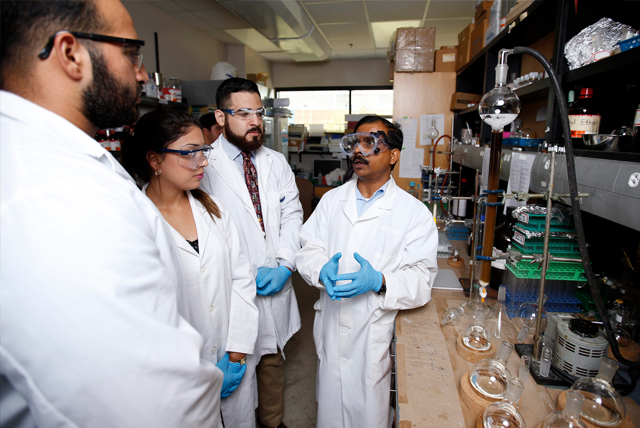Document Type
Article
Publication Date
8-25-2020
Abstract
Due to the morbidity and lethality of pulmonary diseases, new biomaterials and scaffolds are needed to support the regeneration of lung tissues, while ideally providing protective effects against inflammation and microbial aggression. In this study, we investigated the potential of nanocomposites of poly(vinylidene fluoride-co-trifluoroethylene) [P(VDF-TrFE)] incorporating zinc oxide (ZnO), in the form of electrospun fiber meshes for lung tissue engineering. We focused on their anti-inflammatory, antimicrobial and mechano-electrical character according to different fiber mesh textures (i.e., collected at 500 rpm and 4000 rpm) and compositions: (0/100) and (20/80) w/w% ZnO/P(VDF-TrFE), plain and composite, respectively. The scaffolds were characterized in terms of morphological, physico-chemical, mechanical and piezoelectric properties, as well as biological response of A549 alveolar epithelial cells in presence of lung infecting bacteria. By virtue of ZnO, the composite scaffolds showed a strong anti-inflammatory response in A549 cells, as demonstrated by a significant decrease of interleukin (IL) IL-1α, IL-6 and IL-8 expression in 6 h. In all the scaffold types, but remarkedly in the aligned composite ones, transforming growth factor β (TGF-β) and the antimicrobial peptide human β defensin 2 (HBD-2) were significantly increased. The ZnO/P(VDF-TrFE) electrospun fiber meshes hindered the biofilm formation by S. aureus and P. aeruginosa and the cell/scaffold constructs were able to impede S. aureus adhesion and S. aureus and P. aeruginosa invasiveness, independently of the scaffold type. The data obtained suggested that the composite scaffolds showed potential for tunable mechanical properties, in the range of alveolar walls and fibers. Finally, we also showed good piezoelectricity, which is a feature found in elastic and collagen fibers, the main extracellular matrix molecules in lungs. The combination of all these properties make ZnO/P(VDF-TrFE) fiber meshes promising for lung repair and regeneration.
Recommended Citation
Azimi, B., Sorayani Bafqi, M. S., Fusco, A., Ricci, C., Gallone, G., Bagherzadeh, R., Donnarumma, G., Uddin, M. J., Latifi, M., Lazzeri, A., & Danti, S. (2020). Electrospun ZnO/Poly(Vinylidene Fluoride-Trifluoroethylene) Scaffolds for Lung Tissue Engineering. Tissue engineering. Part A, 26(23-24), 1312–1331. https://doi.org/10.1089/ten.TEA.2020.0172
Publication Title
Tissue Engineering Part A
DOI
10.1089/ten.TEA.2020.0172



Comments
© Mary Ann Liebert, Inc.